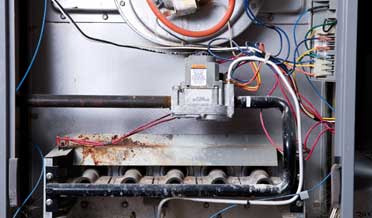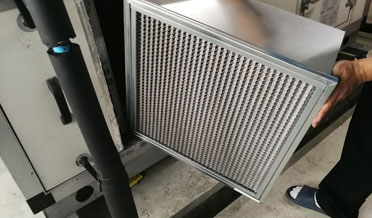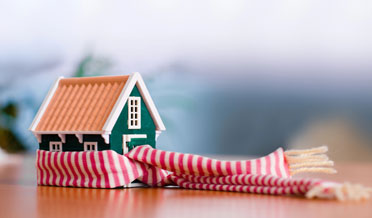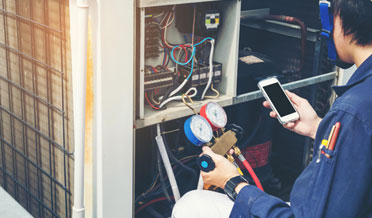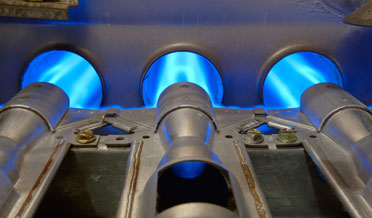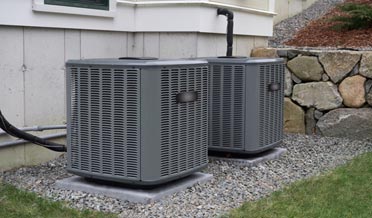AC Service College Station: Efficiency, Comfort, and Smart Home Integration
If you are in the market for a new HVAC system this year, there are some exciting innovations for the newest iteration of heating and air conditioning systems. Doing great research before making a decision will lead to some great features that highlight increased efficiency, comfort, and ease of use.
AC Service College Station Improvement: Sustainability and Longevity
Newer systems can do the same ol’ tasks—heating, cooling, and keeping air fresh–better, cheaper, and longer than older systems.
SEER and AFUE ratings help homeowners make informed decisions about their purchases.
- Seasonal Energy Efficiency Rating or SEER is a number affixed to air conditioning systems (the higher the better). SEER ratings range between 14.3 and 22 in Texas. This number represents the ratio between cooling output and the energy required for cooling.
- Annual fuel utilization efficiency or AFUE is a similar rating for furnace systems. This number is a percentage of the available energy that is captured by a heating system. Electric furnaces capture 100% of the available energy, while natural gas systems range between 90 and 98.5%.
Researchers and the US Environmental Protection Agency are constantly seeking more environmentally friendly solutions for refrigerant gas. The current solution is very efficient while reducing the impact on the earth’s ozone layer.
Variable speed components heat and cool efficiently at just the right level of comfort. The heating demands of a furnace are different when the outside temperature is 610 F and 6.10 F. Variable speed compressors and blower motors can deliver just the right amount of heat or cooling for the need.
Homeowners are also considering the option that has been available in commercial settings with greater interest—mini split ductless HVAC systems. This innovation uses a room-sized air handler in each room, while the workhorse of the system is installed outdoors. Mini-split systems allow homeowners to zone individual rooms for comfort preferences. It can be a money-saver. Check it out.
AC Service College Station Improvement: Indoor Air Quality
While most people enjoy “the great outdoors,” we tend to enjoy it in small doses; according to the Environmental Protection Agency, Americans spend 90% of their time indoors. Therefore, indoor air quality is gaining importance and new HVAC systems are changing to meet the need.
Improved filtration measures are available on newer HVAC systems. Advanced filters have been around for a long time, but the close-knit fibers of these filters reduce airflow and strain normal blower motors. Newer systems use strong motors to accommodate enhanced air filters.
Many airborne contaminants are organic; pollen, mold spores, dust mites, bacteria, and viruses. Ultraviolet lights are a common accessory that can be installed inside the ductwork. UV light damages DNA and disrupts cell walls, neutralizing these contaminants and reducing allergy and asthma triggers.
Air purifier technology is also improving. Whole house or room-sized portable units are available for family members with severe breathing problems and illnesses.
AC Service College Station Improvement: SMART Home Integration
SMART appliances abound and HVAC systems also take advantage of internet connectivity. The thermostat used to be the ON/OFF switch for the HVAC system, but now thermostats have many more capabilities. SMART thermostats can:
- Schedule temperature changes to meet comfort preferences. Do you like to sleep in a cooler room, but want the house toasting warm when everyone wakes up? No problem. Do you want to change the temperature settings during the day while everyone is away? Done. If your schedule changes, a cell phone app can change the temperature setting on the fly.
- The thermostat can inform a homeowner of the energy required for heating and cooling and keeps records. This makes energy trends come to life.
- SMART thermostats can remind a homeowner of needed maintenance and detect problems that require repair.
SMART thermostats use AI to constantly learn, giving homeowners increasing amounts of information. This will improve how homeowners use their systems and lengthen the useful life of HVAC systems.
Exploring the Latest AC Service College Station Innovations with R.M. Mullinix
This article explores the latest HVAC innovations that improve efficiency, comfort, and sustainability. New systems feature advanced SEER and AFUE ratings, variable speed components, and mini-split ductless options, helping homeowners save on energy costs. Additionally, modern HVAC systems offer enhanced indoor air quality features and smart home integration, such as AI-powered thermostats that optimize energy use and provide maintenance reminders.
For more information about R.M. Mullinix and our AC Service College Station services, schedule an appointment or visit our HVAC replacement and installation information page.
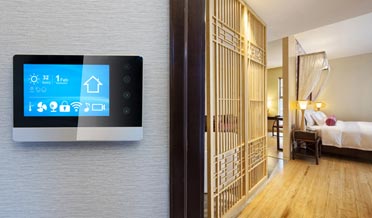

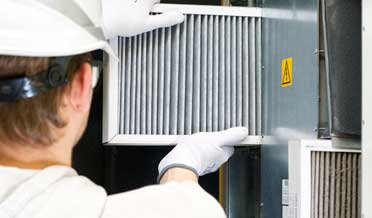
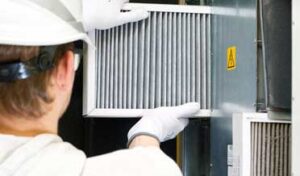 Even perfectly oiled machines don’t remain in tip-top shape without maintenance.
Even perfectly oiled machines don’t remain in tip-top shape without maintenance.